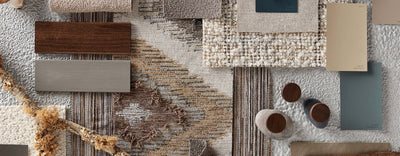
Ray Flake: Oak’s Signature Beauty Mark
Darcy SmithShare
 Print
Print
[originally posted September 2023]
Some years ago, Stickley Customer Service received a letter from customers who were deeply dissatisfied with the “lighter-colored splotches and lines” on their newly delivered furniture. They’d purchased Stickley pieces many times and had never seen such “discolorations” before. The photo they included made it clear the splotches were in fact the ray-flake grain pattern typically seen in quartersawn white oak.
The story proves that even long-time Stickley lovers can find ray flake surprising if not prepared for it. If their previous experience is with cherry or walnut furniture, or even pieces made from plain-sawn oak, then quartersawn oak is going to present them with a very different look than what they’re accustomed to. And yet it’s the unpredictable nature of the grain that makes furniture crafted from quartersawn oak so special.
Sawing is the difference
“We may, in the arms of our reading-chair, or in the desk before which we pass our working-day, study the striking undulations in the grain of oak, ash, elm, or other of our native woods, and in so doing, learn the worth of patient, well-directed and skilled labor…”
– From the first issue of The Craftsman magazine, October 1901
Solid white oak has been the material of choice for most of Stickley’s Mission and Arts and Crafts furniture throughout its history, thanks to its ready availability, its strength, and its resistance to warping, denting, and wear. But Gustav and Leopold Stickley also understood the importance of beauty inherent in the wood, and oak above all offers an incredible range of looks brought out by different approaches to sawing the boards.
The most traditional method of cutting boards is plain-sawing or flat-sawing, where the log is simply cut repeatedly along its full length. Because the tree’s growth rings run parallel to the face of the board, the result is the familiar long, arced grain known as cathedral grain.
Quarter-sawing logs, however, creates a very different effect. In this technique, the logs are cut into quarters, turned, and sawn into boards that run perpendicular to the center of the log and to the growth rings. (One of our longtime suppliers, Frank Miller Lumber, has produced a fascinating video that beautifully demonstrates this process.)
The operation yields less lumber than flat sawing, and the resulting boards must be kiln dried longer, resulting in higher cost. But quarter-sawing produces more stable boards, as well as its own striking grain figure.
A feature, not a flaw
In any tree, fibrous cells known as medullary rays carry water, sap, and nutrients from the center of the trunk outward, perpendicular to the growth rings. Usually they’re quite small, but in white oak they are much more prominent. When quarter-sawing intersects them, it creates the figure known as ray flake, which can take the form of wavy tiger stripes or flecks.
The presence of this natural figure can vary widely from board to board, with some having only a fine straight grain, as in the bottom half of the photo above, and others covered with stripes, curls, and yes, splotches! It’s possible that the showroom model our letter-writing customers saw before purchase showed much less evidence of ray flake than the piece they received.
Its unpredictable variation is part of what makes ray flake in quartersawn oak so desirable—and it’s another of the qualities that ensures that no two Stickley pieces are alike.




Additional sources:
Frank Miller Lumber (frankmiller.com)








